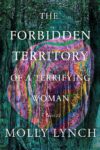[Catapult; 2019]
Summer is, for some, the season. A time of the year to look forward to. It is blooming and abundant. It is like the extra-seasoning of seasons: the lingering taste that makes mouths water but cannot be named, retreating almost as soon as it has arrived. Summer is bright, but, damn, is it melancholic. Presumptive and anti-climatic. Sticky, with sweat and expectation. Holidays, bodies, socializing, feeling, resting, living — all saved up, worked on or held in suspense until summer. And so, so often, summer passes us by. Quickly and loosely. Full but rarely savored. Summer becomes a caricature: performative and representative. It carries a lot of affective weight. It is electric — “in that charged, almost repressed way.” It is symbolic — including of people, the relationships between them and that they have with themselves. (At least, that’s the way Deborah Shapiro writes it.) Yes, we demand a lot from the summer, and equally, the summer demands.
The Summer Demands, written by Deborah Shapiro, is not about summer. Instead, in it, summer becomes a narrative trellis for characters to wind themselves around. It becomes a landscape. A space to enter but not to inhabit. No, rather, summer is a space that inhabits. It transfers into people, like Emily, the book’s spiraling yet decelerated narrative voice. Throughout the novel she is, like summer, on the cusp: of her fortieth birthday, of a new life, of an old life, of an absence, of many relationships, of an abandoned camp, of a city. In fact, the book is “a celebration of cusps.” Those of adulthood; of motherhood; of desire and ambition; of memory and history, and those that that decipher generations. It is a running sequence of “what ifs” and “soons.” A collection of edges: transitional points that enable becoming. The indicative markings of an ending that is a beginning, and a beginning that is also an ending.
For example, when the book begins, Emily and her husband, David, have recently experienced a series of losses: a miscarriage, the death of Emily’s great-aunt Esther, and their jobs (although they weren’t so much lost as given up). To Emily, her great-aunt leaves her inheritance, including Alder, a summer camp for girls — one that Emily attended in her youth — that Esther and her husband, Joe, once ran in a south shore Massachusetts town. Now that the camp is unoccupied, Emily and David decide to leave their current home of Chicago and move across country to New England. Their plan is to renovate the camp; to pump life and love and laughter into its remains with the hope of having the favor reciprocated. In time they hope to re-open it as “a camp for adults.” To polish it and make it an escape for city or creative people with the opportunity to do so. To recreate a life of their own making — to “get out of line.” And for Emily, in particular, this move is another chance, another shift: from job to parenthood to, maybe, entrepreneurship. But this plan, at least on paper, doesn’t work out. Finances never add up. Days slow. Time drifts. The camp remains largely untouched and uninhabited — except by ghosts. Every cabin and square-foot is filled with remnants of Esther and Joe’s marriage and their life at the camp, as well as the “hierarchies” of girls who once attended.
As a child, during her summers at Alder, Emily learned many lessons about the spoken and unspoken dynamics of female friendships; as well as the socialized expectations equipped within them — “codes and signs” that she “will learn to read.” Returning to the camp, as an adult, Emily is flooded with memories. And although she remembers the things she did — swimming in lakes, making-out on beaches — it is more the relationships she had with people that resurface. The relationships that have come to shape her understandings of others and herself. These recollections fill the pages of the novel, taking chapters off into various tangents. And in this regard, each memory feels like a tumbling and then it suspends, as triggerings often do. Time, in The Summer Demands, isn’t measured — despite what the seasonality of title suggests. I mean, it is measured as in it is felt: the control of it, the weight. But it isn’t regulated, at least for Emily. Unemployed with nowhere she needs to be, her routine is feather-like, going where it wants: “Days [pass] into each other without much distinction, dulling all anxiety but heightening a sensitivity.” She spends her time ambling throughout the house, walking around the camp and wallowing in the shallows or plunging the depths of the lake, of her marriage, of relationships new, of relationships tried, of herself, of career opportunities, of years passed, of what once was — and maybe, maybe, is still — possible. And as she does so, she searches. Compelled by those phantom feelings, the irretrievable and metamorphic senses that crawl up spines, Emily’s recalled memories shock her into alertness. They shock her into the present, while at the same time calling her to go backwards. So, with David working a job in the city, Emily becomes an archaeologist, picking apart all that surrounds her, including her memories. She “unearth[s] them, examine[s] them, [hoping to] glean something from them,” writes Shapiro. Although, “the point [isn’t] to solve the mystery, only to recognize it is there.” This summer spent on haunted land shakes Emily. It makes her question her life, and who she is within it.
*
The Summer Demands is less a story about what get passed down and more about what gets passed around. Throughout the book, Shapiro writes parallels between Emily and David’s relationship, the occurrences of their life together, and Esther and Joe’s. During her archival searches, both material and immaterial, Emily looks for evidence of these parallels: “I knew there was a chance I might discover something I didn’t want to know about Esther, about Joe . . . I believed in the belief they had in each other. I never found anything that made me doubt it.” She is looking for evidence of her own futurity. For evidence of hope and for guidance — a following of footsteps. Like Emily and David, Esther and Joe were “fairly conventional” people who “rejected what had been expected of them and then had to redefine and readjust what was expected of themselves.” They, too, were unable to conceive a baby. And they were, as Emily is, Jewish, growing up in a community of second- and third-generation Jewish immigrants from Eastern Europe. As such, all three — Esther, Joe, Emily — carry familial and collective histories within themselves. Moving to the camp Emily enters her family’s past, and in doing so she works to locate herself within it. So, between the two couples’ occupancy of the camp — divided by a generation — grief is passed around. Absence is passed around. Along with the desire to fill it.
In rural isolation, Emily feels lost: “lost potential, lost some sense of possibility that I had taken for granted, some underlying, grounding idea of who I was and who I would be.” She internalizes the failure of the camp’s renovation and combines it with her perceived failure to become a mother and to pursue a career — i.e. to have the ambition that is expected. Emily wants to find and to be found. And she does both, in parts. Like, once David comes home each evening, she is momentarily found. Once she picks up the dirty dishes at the sink, hands equipped to clean, she is found: “I knew what to do with dishes, what to do with myself when I was doing the dishes, so I started rinsing, getting into . . . a rhythm.” But this isn’t an expression of housewife melancholy, it is about recognition. It is to do with the multiplicity of being seen (even by dishes). It is also about guilt. Emily does the dishes — the more the better — to dislodge a feeling of uselessness, of being a burden to David. She thinks: David got a job to support their finances and so she needs to start “pulling [her] weight.” It is about routine (the “normalizing . . . flow”) being equally restorative as it is a distraction. And distracted Emily is, until she focuses on that which is invisible: “I realized for the first time . . . I had been pulling my weight, and his, if you thought of the weight as grief.”
Emily is also found when she finds Stella. A “vivacious” twenty-two year old who has been living in one of the empty cabins on the grounds of the camp for, at the time Emily discovers her, a couple of months. A young woman rooted in no place but existing inside a place that belonged to “all the girls with dark Anne Frank eyes . . . a place she didn’t belong” — like Esther, like Emily. Stella: “a person of lines and edges” who is self-possessed and without motive. Who moves with ease, extending herself, like a cat waking up from a nap. She is Emily’s confrontation; a fire that never burns nor burns out. And she returns to Stella repeatedly, looking for warmth, but is never fully satisfied. Emily places a cusp within Stella and walks to it, over and over again, but can’t decide whether or not to cross the threshold. It is unclear if she wants Stella to become in place of her own becoming, or if she is trying to figure out who she wants to become through Stella — or if it is a bit of both. As Shapiro writes:
But what about the thing you did see coming . . . that you weren’t supposed to spend time worrying about? . . . I hadn’t seen her coming, but I had seen her absence, felt it so keenly that I wondered if I hadn’t imagined her into being what I needed.
Either way, from Stella, Emily expects too much. Demands too much. Demands to be seen and to see. To be filled. In The Summer Demands, Deborah Shapiro takes on the task of navigating what it is to (desire to) see, to (desire to) be seen and, dependent on who is seeing, what type of becoming this enables.
*
In college, Emily majored in film and “wrote a thesis on female education. Education as seduction. Seduction as education. Pedagogy and power.” She analyzed films such as: Les Liaisons dangereuses (Dangerous Liaisons), Henry V and Trust — all written and directed by men. She also wrote a section on Hélène Cixous’ The Laugh of the Medusa. During the summer, Emily watches and re-watches seductive French films, becoming enraptured with the characters she meets. She watches people, too, observing all that is going on around her through a frame: “iris shot, blackness encircling and closing in.” Films — The Servant (1963) by Joseph Losey, Husbands (1970) by John Cassavetes, Summer (Le Rayon Vert) (1986) by Éric Rohmer, and Je, Tu, Il, Elle (1974) by Chantal Akerman, among others — are divisive for Emily, acting as frameworks through which she can ‘gaze’ at and story the relationships in her life. The gaze as theorized by Laura Mulvey. The gaze as theorized by Michel Foucault. Sight as something possessed and possessive: uni-directional. Emily — I presume and Shapiro hints — knows about both. And yet, she seldom holds herself accountable: “I returned her gaze until it became something of a challenge: who would look away first. Stella did. And there was something defeated in it.”
As a result, all the relationships in The Summer Demands have to do with power, and gazing becomes “a kind of defense mechanism.” Emily’s reflex is to remove herself and observe through a viewfinder: “detachment through close attention.” A way to gauge and idealize her relationships. But, in doing so she objectifies, minimizes, and, at times, deletes the expansiveness of the people in her life, as well as herself. It is strange: while Emily is attentive to other people’s complexity, and no matter how much she fears being categorized by another — “of being done with. Of being on the outside and wanting back in” — her first instinct is to dissect. To see a person as parts. As representational. And, in consequence, the characterizations Shapiro pens seldom go beyond the boundaries of whatever relationship Emily holds with them; beyond her characterization of them.
Through Emily, Shapiro demonstrates a person that resides within us all, somewhere. A person who — in this world — it is frighteningly easy to feel the force of. Emily personifies a specific brand of existential neuroses; one inextricably linked to ego/selfhood but that is minimally disruptive, at least publicly. That is pre-packaged, smoothed-out, manageable. A compound of anxiety and apathy. Emily is wary and acutely self-aware. Nothing just is. Every thing — a word, a tone, a look, a gesture, a smile, a memory, a person — is pronged. And on account of this (somewhat passive) pronging, Emily categorizes, stereotypes, and lays claim to the identities of others through judgement and projection. She is a character whose violence, towards others and herself, is quiet but not invisible. She is a character who takes risks, but only those that can be enacted through a certain measure of privilege. A character who when drowning in the pool of her own insecurities uses other people — sometimes inadvertently — either as a life-raft, or she pushes them under. And in the book, these people — mostly women — act as extensions for the parts of Emily that she cannot yet hold.
For example:
Emily’s relationship with Stella is chameleon-like, morphing from landlord-lodger, to student-teacher, to parent-child, to friendship. Shapiro never distinguishes whether these shifts are a product of reciprocal evolution — a fluidity through connection — or solely a manipulation on Emily’s part to see or “imagine [Stella] into being what [she needs].” Regardless, Emily continually objectifies Stella as an idealization of youth, one she feels she has lost and can, possibly, reconnect to, infiltrate as an outsider or experience vicariously through Stella.
Alice (Stella’s limbo girlfriend, who bunks in the cabin, with Stella, for a while) is a persona — like Marilyn Monroe, or Joan Crawford — a “mercurial goddess” and a millennial cliche. She performs with an ease that Emily perceives unattainable. Alice is brazen with her body and voice. And Emily is intimidated, casting Alice’s sexuality as an off-cut of unrefined youth. A “young woman whose voraciousness hadn’t yet found a focus.” Alice is the face value Emily feels she is continually catching up to, but doesn’t actually want to reach. She just wants to look.
Then there’s Samira, a potential employer. She is successful, well-dressed, attends parties, lines her office with art and fashion books, is married, asks to be called “Sam.” She is a woman who found herself in a place — Boston — that she wasn’t sure she belonged, and so, she created a belonging: her business. Samira is a representation of the woman Emily once wanted to be and wonders if she still can be: a representation of aestheticized second-wave feminist ambition.
And finally, there’s Liz, Emily’s longest friend whom she met during her first year of college. There is certainly love between them, but there is also misplaced bitterness. Liz is married, has had a successful career as a dancer and choreographer, and is a mother. Emily is admiring of her friend, proud even; but she is careful to note that Liz continues to choose between these roles, to compromise, as a form of reaffirmation (to herself) that a person (woman) cannot have it “all.” Because this is an example of competitiveness that has nothing, really, to do with the other person. Liz — like David — is a mirror image for Emily. A person who personifies that type of comfort that can easily slip into discomfort: the fine line of being seen. And because of this she sometimes turns away from Liz, but that is only because Emily is reluctant to look at herself.
There is also another woman, a stranger. A woman in a housecoat who Emily, when in the car with David, leaving Chicago for Massachusetts, sees standing in a window. This woman is a woman of many women. A woman as symbolic. Like Anne Frank’s eyes, she connects generations (“late ‘70s and early ‘80s, traces of the ‘50s and ‘60s”) and is heavy with history. This woman’s existence is reliant upon a paradox of hyper- and in-visibility: a window, a house, a coat, a memory. And through Emily’s recollection, Shapiro writes:
I thought she was a girl at first, but she was an old woman . . . and then she seemed to me more like a painting, or a photograph. No longer a person but an image hung on a wall or printed in an art book. I wanted to stare at her as much as I wanted to turn away.
To Emily, this woman is an outcome she never wants to reach: a perceived and societal vanishing. A role not to perform, but inhabit. A cusp — “encroaching.” And then, later on in the novel, when Emily standing in front of her living room window, wearing “housecoat-equivalent clothes,” looks out, at Alice, and Alice looks back, she becomes:
I hadn’t thought, at the time, about what she was seeing, the woman in the housecoat. Or rather, it has seemed to me that she wasn’t seeing. That, in standing in the window in such a way, she was more interested in being seen. But that had been my failure of imagination, to not grasp the whole of it, only my part.
Both this moment, with Alice, and that with the woman in a housecoat, encompasses some of the tightest knots that bind the pages of this the book: the concept and practice of “the gaze,” and its partiality, the accountability of spectatorship, relationships between women, women’s bodies, the haunting of memory, the learned difference between ageing and becoming, representational politics, societal roles and role-play. This moment itself is a role-reversal. It is a re-seeing. And through this re-seeing, Emily begins to break down the frame she has constructed not only around this woman, but all other women, including herself.
*
In the final few pages, Emily looks back on her summer just as she, while at Alder, looked back on her life. It has been three years since Emily last spoke to Stella, but her voice — like those of childhood female friends — still lives inside her. She reflects: “when that summer at Alder comes to me, it comes in images, sensations, movements.” And so, despite this new shifting of her life — a relocation, a dog — haunted, she remains. Susceptible to the draft of time, she remains. Questioning, she remains. The novel, in its entirety, takes on a sense of being in pursuit: seeking, uncovering and learning as it goes. It is an entangled and continuous flow of thought that builds and builds and never really reaches climax. Never attains resolution. And it is through this methodological recoiling, and through Emily, that Deborah Shapiro is able to ask questions. The kinds that swell inside people. The kinds that become unwritten through languages of avoidance. But questions that, every so often, refuse suppression. That burn.
What is it to acquire a role — wife, parent, employee, an age? Who are we without performative roles? Who are we without performance? And what about the becomings that are beyond our control? How do we know the difference? What do we do when our lives become too heavy? For how long are we supposed to carry our histories? Our losses? For how long do we carry? And can we ever, really, put it all down? How do we let go? How do we not let go, and still fold into newness? What is it to disappear and continue living? What happens when our desire to live is the very thing that keeps us from living? And what compels us to keep going? Keep loving? Keep being?
The answering of these questions is fairly unimportant to Shapiro, who seems more concerned with the actual practice of asking. These questions, left unanswered — as well as the conversations and actions of the characters, and the characters themselves — reverberate inside the novel. Which becomes, like summer, a container: full of busy yet static energy, moving in various directions, struggling to settle and waiting to be released. To be relinquished from pressurized expectation. It is this tension that Deborah Shapiro maintains until the end: the possibility, or the idea of the possibility, of unrestricted existence. Of being able to live outside of the frame. To live as the young woman, played by Chantal Akerman herself, does in Je, Tu, Il, Elle: as a “woman, just being” and for that to be “worth filming, worth watching.” Or, in other words, to take up space without anchorage, unapologetically, and for that to be enough. In this sense, the book becomes an echo of itself. It becomes symbolic of space — inhabited and inhabiting. Of ageing. Of living. And of time. Reading The Summer Demands feels like standing on the edge of this space. It feels like an arousal of urgency. Just as the wondrous Katherine Hepburn once said, “Wouldn’t it be great if people could get to live suddenly as often as they die suddenly?” And it is this edge that, as a reader, you take with you.
Mollie Elizabeth Pyne is a freelance writer and Masters student at Goldsmiths, University of London, specializing in feminist and queer theory, body studies, and literature. They are currently based in Devon. Sporadically tweets @bittter0cean.
This post may contain affiliate links.








